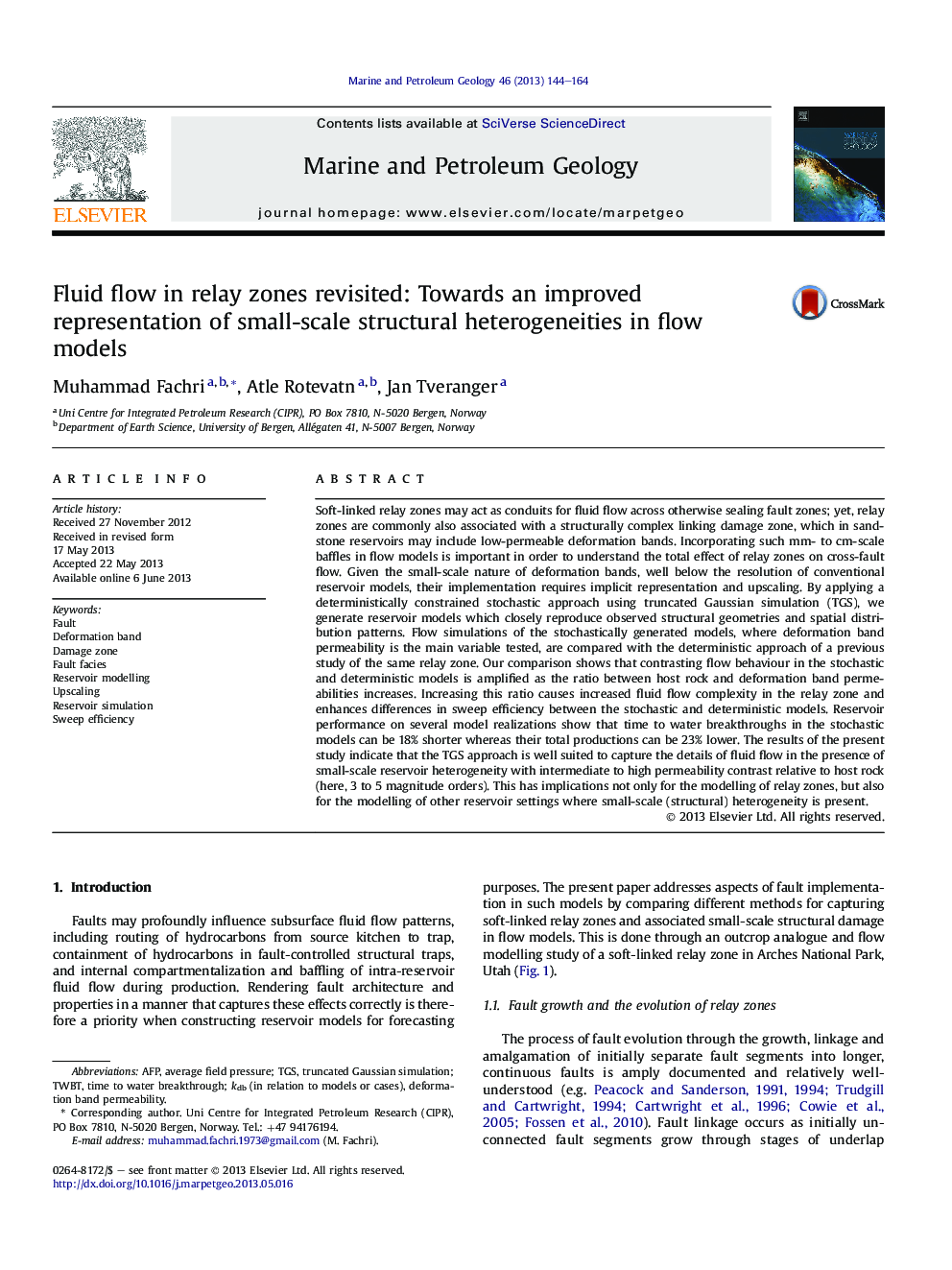| کد مقاله | کد نشریه | سال انتشار | مقاله انگلیسی | نسخه تمام متن |
|---|---|---|---|---|
| 4695712 | 1637178 | 2013 | 21 صفحه PDF | دانلود رایگان |
• We utilize truncated Gaussian simulation for modelling of relay zones (RZs).
• The basic modelled units are derived directly from detailed field observations.
• The outcrop maps are reproduced well in the fault facies models.
• Our flow simulation results are compared to those of a state-of-the-art study.
• We re-assess the effects of sub-seismic structures on fluid flow within RZs.
Soft-linked relay zones may act as conduits for fluid flow across otherwise sealing fault zones; yet, relay zones are commonly also associated with a structurally complex linking damage zone, which in sandstone reservoirs may include low-permeable deformation bands. Incorporating such mm- to cm-scale baffles in flow models is important in order to understand the total effect of relay zones on cross-fault flow. Given the small-scale nature of deformation bands, well below the resolution of conventional reservoir models, their implementation requires implicit representation and upscaling. By applying a deterministically constrained stochastic approach using truncated Gaussian simulation (TGS), we generate reservoir models which closely reproduce observed structural geometries and spatial distribution patterns. Flow simulations of the stochastically generated models, where deformation band permeability is the main variable tested, are compared with the deterministic approach of a previous study of the same relay zone. Our comparison shows that contrasting flow behaviour in the stochastic and deterministic models is amplified as the ratio between host rock and deformation band permeabilities increases. Increasing this ratio causes increased fluid flow complexity in the relay zone and enhances differences in sweep efficiency between the stochastic and deterministic models. Reservoir performance on several model realizations show that time to water breakthroughs in the stochastic models can be 18% shorter whereas their total productions can be 23% lower. The results of the present study indicate that the TGS approach is well suited to capture the details of fluid flow in the presence of small-scale reservoir heterogeneity with intermediate to high permeability contrast relative to host rock (here, 3 to 5 magnitude orders). This has implications not only for the modelling of relay zones, but also for the modelling of other reservoir settings where small-scale (structural) heterogeneity is present.
Journal: Marine and Petroleum Geology - Volume 46, September 2013, Pages 144–164
